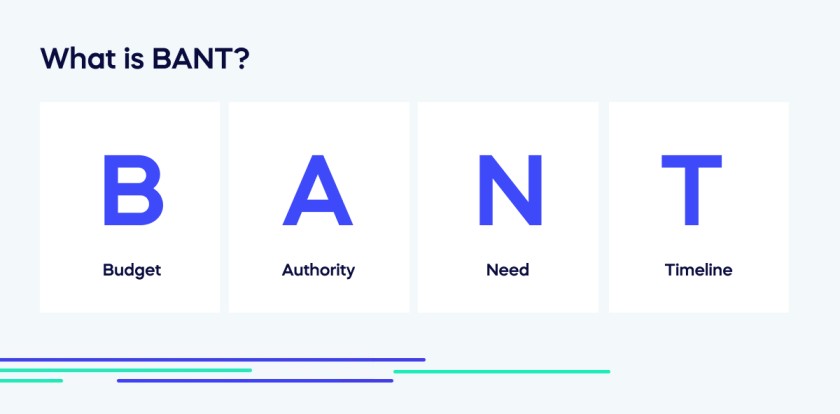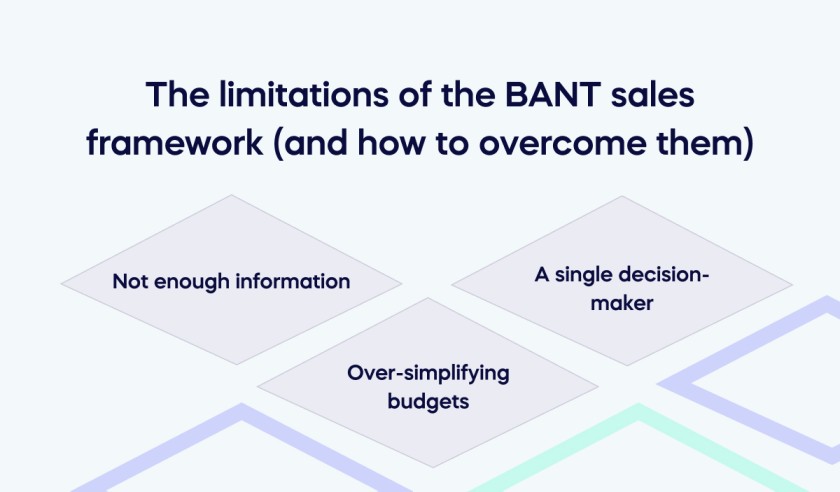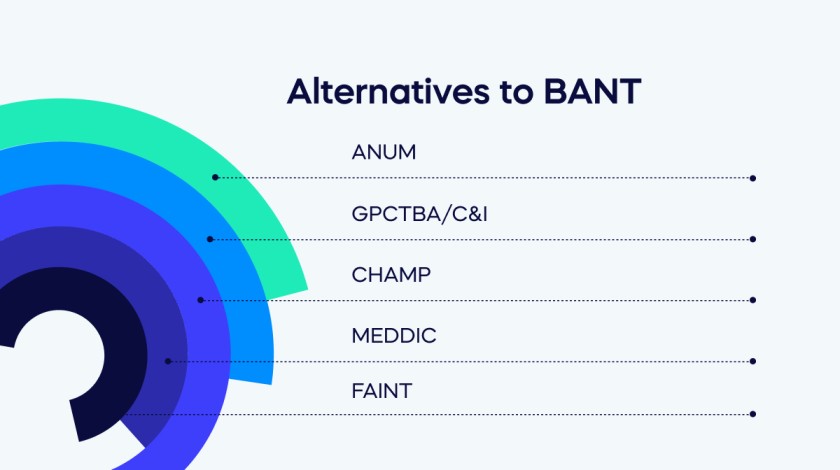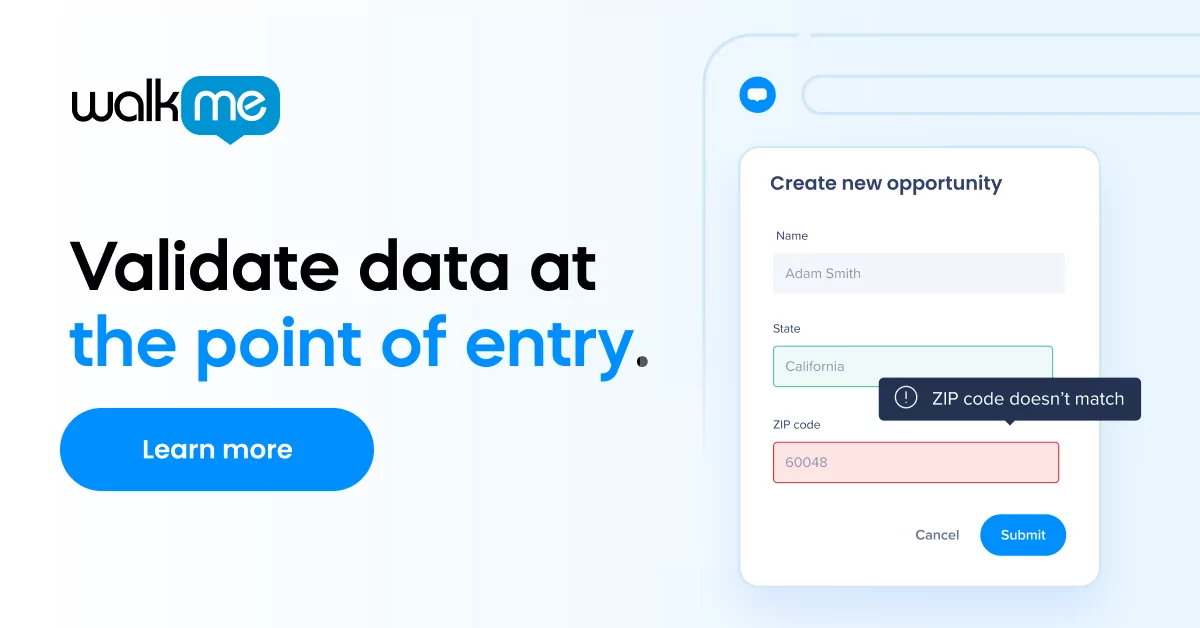What does BANT mean?
BANT is a method used to qualify software sales leads to see if they are worth pursuing. The acronym stands for four important qualities of a potential client: Budget, Authority, Need, and Timeline.
Although B2B SaaS sales is going through an upheaval that McKinsey calls “the great reframe”, BANT is an old-style framework that still has a lot of value. Although it was first devised by IBM in the 1950s, BANT continues to help sales teams to understand the needs of their clients (and whether their product will be helpful for them!).
In this article, we’ll give you an overview of how BANT works. It will:
- Explain in detail each stage of the BANT process;
- Analyze the limitations of BANT (and how to overcome them);
- Suggest some alternative methods for SaaS lead qualification.
BANT and its alternatives are, without doubt, useful methods – but they are only one aspect of a sales rep’s overall set of sales tools. However, if you’re just starting out in sales, or trying to hone your skills, it’s still worth considering using these tried-and-tested techniques.
What is BANT?

BANT is a framework for the lead qualification process in sales. The four BANT criteria of Budget, Authority, Need, and Timeline, give an overview of a prospect’s viability.
The BANT framework supports efficient lead qualification. It means that sales teams can focus on relevant prospects, streamline the sales process, avoid dead-end deals, and adopt a customer-centric approach. By assessing the prospect’s Budget, Authority, Need, and Timeline, sales teams can prioritize efforts, tailor solutions, and make informed decisions, leading to increased conversion rates and customer satisfaction.
This section will introduce the four key elements of BANT. We will explain each part, and then show some questions that the sales team can ask prospective clients.
Budget
The budget criterion determines whether the prospect has the financial resources to make a purchase. Sales reps must understand the prospect’s budget constraints, and make sure that their solution aligns with the prospect’s financial capacity.
Relevant questions to ask
- What is the allocated budget for this project or purchase?
- Are there any budget constraints or limitations we should be aware of?
- Can you share any insights on how the budget was determined and approved?
- Is there flexibility in the budget, or are there specific cost considerations?
Authority
The Authority element centers on identifying the key decision-makers involved in the buying process. On the sales call, a rep must find out who has the power to make the final purchasing decision and who influences that decision. The whole sales process is a lot easier when the sales team engages with the right decision-makers.
Relevant Questions
- Who are the key decision-makers involved in this buying process?
- How are decisions like this typically made in the prospect’s organization?
- Can you help facilitate an introduction to the relevant decision-makers?
Need
The Need element of BANT involves understanding the prospect’s pain points, challenges, and requirements. Salespeople have to uncover the specific needs that their product or service can address effectively. On the one hand, demonstrating a deep understanding of the prospect’s needs helps build credibility and trust. On the other, if the prospect simply doesn’t need the solution, it’s much better to put an end to the relationship.
Relevant Questions
- What specific challenges are you facing at the moment?
- Can you describe the ideal solution you are looking for in more detail?
- What are the critical features you need from a solution?
- How could you see our product/service fitting into your existing workflow?
Timeline
The Timeline element in BANT pertains to the prospect’s buying timeframe. Salespeople need to know when the prospect intends to make a decision or implement a solution. Understanding the timeline is crucial for planning and prioritizing sales activities.
Relevant Questions
- When do you hope to make a decision about this purchase?
- Are there any external factors or events influencing your decision timeline?
- How urgent is your need?
- Are there any specific milestones or deadlines we should be aware of?
The limitations of the BANT sales framework (and how to overcome them)

BANT was devised in the 1950s. That was a long time ago: and it’s remarkable that BANT remains a force for driving sales into the 21st century.
However, some industry figures reject BANT because it is too old-fashioned. We don’t agree. It’s still got a lot of value for sales reps everywhere. BANT is highly relevant: you’ve just got to know its limitations and work around them. So in this section we’ll describe three of BANT’s weaknesses: insufficient information gathering, over-simplified budgets, and its reductive assessment of authority.
Ultimately, these workarounds make BANT more time-consuming. But in the long term, it keeps the framework as a helpful method of analyzing business pain points – and responding to them effectively.
Not enough information
The Weakness: BANT only asks for some information. Just imagine getting on a call with someone who ONLY wanted to hear about those four criteria – and nothing else! Not only would it be annoying, it might mean that the sales rep can’t understand the person they’re talking to. As Jacco van der Kooij explains, “ Basing sales calls too heavily on BANT results in either low-quality SQLs, or worse, low-quality deals”
The Solution: – Make sure that you are using your time to undertake good customer research. Brian Nordli points out that in sales, research is never a waste of time. And even if this does add valuable minutes on to the qualification of each lead, research has the potential to open windows that would stay shut if you were simply “filling in the blanks” on a BANT pro-forma.
Over-simplifying budgets
The Weakness: BANT does not factor in the flexibility of modern software prices and SaaS license management. In the past, the whole concept of “budget” for a software purchasing was simpler. Software used to be paid for as a fully up-front cost, with limited options for growing, adapting, and adding on. In a modern subscription model, up-front costs are lower, adaptability is the name of the game, and the way people handle budgets are completely different. Treating “budget” as a single number (as BANT asks!) ignores all this flexibility.
The Solution: Use BANT’s Budget criterion as a starting point, not as a black-and-white proposition. If the lead is unable to invest any money in your solution, they simply won’t be much use. But if you can adapt, discuss, and come to a compromise, perhaps it will be a different story.
A single decision-maker
The Problem: Authority is a crucial aspect of BANT. After all, sales reps need to know they are talking to the right people. However, today’s organizations are a lot less hierarchical than they were. The internal decision making process could involve many people. The authority for buying a SaaS subscription could be devolved through several committees, sign-offs, and considerations. If a sales rep uses BANT to exclude a lead just because they don’t have the say-so, they could be throwing away perfectly good prospects.
The Solution: To improve this, salespeople should conduct thorough research and engage with a diverse set of contacts within the prospect’s organization to identify and understand the entire decision-making network.
Alternatives to BANT

If you’ve read everything we’ve got to say about BANT, and you still think that it’s missing something, you might find that an alternative approach to lead qualification would work better for you.
To help with your further research, here’s a list of alternative ways of qualifying prospects:
- ANUM: Authority, Need, Urgency, and Money.
- GPCTBA/C&I: Goals, Plans, Challenges, Timeline, Budget, Authority, and Consequences & Implications.
- CHAMP: Challenges, Authority, Money, and Prioritization.
- MEDDIC: Metrics, Economic Buyer, Decision Criteria, Decision Process, Identify Pain, and Champion.
- FAINT: Fit, Authority, Interest, Need, and Timeline.
Each of the above has its own use cases and value and are worth investigating to see if they suit your sales framework more than BANT. Remember, too, that sales thought leaders are constantly coming up with ways to adapt BANT to the modern workplace. Stay informed to keep qualifying leads in the most up-to-date ways!
Final thoughts on BANT
The BANT sales framework is still a valuable way of understanding potential leads.
As we’ve seen, the areas of Budget, Authority, Need, and Timeline can help sales staff to understand their customers. Although there are various limitations of BANT in today’s sales processes, the system is open to adaptation and utilization in different ways.
Remember, though, that lead qualification is just one part of the pipeline for generating and pursuing high-quality leads. As the Gartner blog “How B2B Marketers Can Generate High-Quality Leads” explains, you must have ideal buyer personas, effective sales materials, effective collaboration with marketing, and much more besides.
But for individual sales people, BANT can help to make decisions quickly, efficiently, and with clarity.


